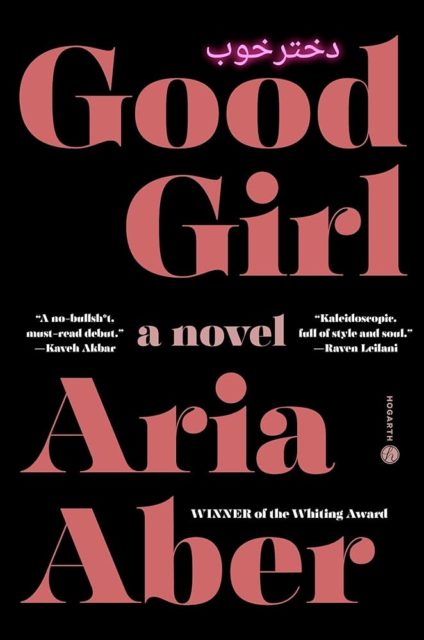This post was updated Jan 28 at 8:43 p.m.
What does being a good girl truly mean? To the protagonist of Aria Aber’s “Good Girl,” it seems to be the most elusive title of them all.
Aber’s debut novel was released Jan. 14 and follows the life of 19-year-old Nila Haddadi, who was born in the slums of Berlin to two Afghani refugees. Nila yearns to be a photographer and live a grandiose life, escaping the clutch of parents she views as suffocating. She falls into a destructive cycle of parties, drugs and toxic relationships, all while confronting her grief over her mother’s death and her Afghani identity during a politically tumultuous time in Berlin.
Nila defies all the stereotypes of what a classic coming-of-age protagonist is like. She is self-hating, imperfect and wildly erratic. She parties for days at a time, taking any drugs she can find. Nila often lies about her heritage, pretending to be from Greece and Italy. The bulk of the novel details her love affair with Marlowe, a significantly older man and a poetically mysterious and emotionally volatile writer.
Yet despite Aber’s characterizations of Nila’s crazy habits and behaviors, she still creates a character that is incredibly relatable to young adults. Nila is conflicted over her identity, as she ponders what it means for her parents to come all the way to Germany for a better life. At the same time, she is aware of the increasingly frequent attacks on Muslims in the country. She is also confused about what she wants – she wants to be a photographer, she wants to be with Marlowe, she doesn’t want to be with Marlowe, she hates her parents, she loves her parents and so continues the cycle. Nila is a dramatization of all the internal conflicts teenagers face as they figure out their place in the world, and although her drug habits and her vicious treatment of her father are hard to witness, readers can’t help but feel invested in her journey.
But the beauty of Aber’s writing goes further than her masterful character building. Aber, born and raised in Germany herself, has created a novel that is a true love letter to Berlin. Through Nila’s eyes, she describes the exhilarating clubs, the horrific slums and the incredible life that the city has to offer. Aber details Berlin with artistic paragraphs of pure description, whether it be the Qurbani bakery Nila frequents, or the wonderful views Nila is faced with when she goes to a rooftop bar on New Year’s Eve.
The author’s true love for the city shines, though, in her steadfast description of all of Berlin – the good and the bad. Nila is constantly seeing news headlines about attacks on Muslims in the city, and she is keenly aware of how unsafe and rundown her neighborhood is. By the end of the novel, readers have a truly holistic understanding of what the city is like, and it is a testament to Aber’s unique, descriptive writing that truly displays her appreciation for the city she grew up in.
In the same way, Aber never shies away from being open and honest about difficult conversations about Afghani culture. She dedicates a chapter to Nila reflecting on how her parents physically abused her when she was younger, and how although it was common in her family, people in Germany looked down upon it.
Similarly, Aber writes in depth about Nila’s queer identity, devoting another chapter to Nila’s first love with a young woman when she was younger. Being queer is another sensitive topic in Afghani culture, but Aber does not back down and confronts these controversies. Aber takes a big step forward by writing about an openly queer woman who acknowledges the good and the bad in her culture’s practices. The result is a forward-thinking novel that creates open and honest dialogue in a community that needed it.
The plot itself, however, leaves much to be desired. Within part one of the novel, Nila interacts with Marlowe a handful of times, with the rest of the story being spent on exposition and details. Almost every other chapter revolves around Nila heading to the same club and doing drugs. The novel spends a large portion flipping back and forth between Nila’s past and present, giving readers crucial insight into Nila’s relationship with her parents and her time in boarding school. Nila’s plotline in the present, however, takes very small steps in each part of the novel. While the story is interesting and keeps readers invested, Aber suffers from pacing issues that make certain chapters feel like they drag on.
Despite these problems, Aber succeeds at building a captivating story. Through Nila’s perspective, Aber romanticizes what it is like to be nineteen, spinning a drug- and sex-filled story that takes readers on a wild and emotional ride, one that is certainly worth the read.
Even if she isn’t a “Good Girl” by most standards, readers find they are still always rooting for young Nila Haddadi.






Comments are closed.